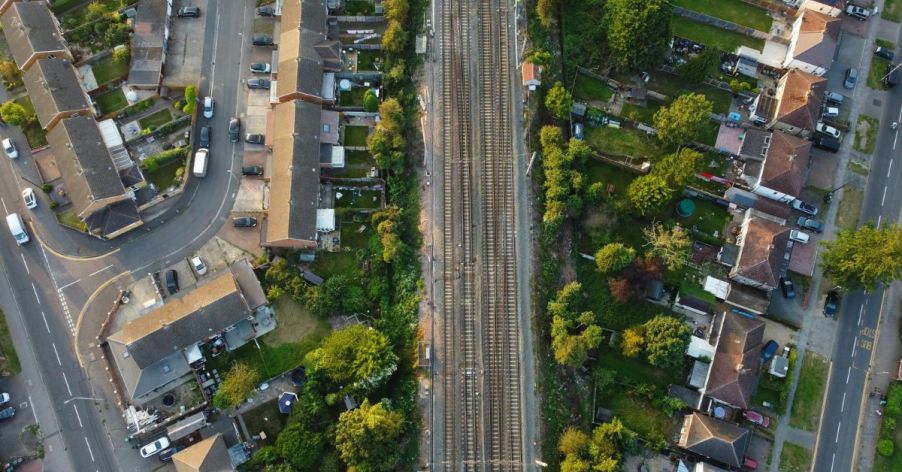
The Hidden Dangers of Stroads in Modern Cities

Did you know that many urban crashes happen on “stroads?” These road-street hybrids are neither safe nor efficient, yet they’re everywhere in our cities. They ruin traffic flow, reduce safety, and even cost more in the long run. So, stick around as we look at how hybrid roads became a disaster and what we can do about the same.
What is a “Stroad”?

A stroad is a mix of a street and a road. Streets are designed for people to walk, shop, and enjoy their neighborhood. Roads are built for fast, long-distance travel. A stroad? It does neither well. It tries to be both and ends up confusing drivers and putting people at risk.
The Main Problem with Stroads

Stroads are confusing. Cars go fast, but there are crosswalks, driveways, and shops on the side. This mix makes drivers rush while pedestrians dodge traffic. Plus, they often lack clear bike lanes. This blend of street and road creates danger, and cities end up with more accidents and frustration.
Not Efficient

You’d think a hybrid road would help traffic move faster—it doesn’t. The constant stops at traffic lights, crosswalks, and side streets slow everyone down. Cars move slower than on regular roads, but it still feels too fast for people walking. This inefficiency means more traffic jams and stress for drivers and pedestrians.
They Cause More Accidents

Accidents are more common on stroads because of their confusing design. Drivers speed up, expecting road-like flow, but face street-like elements—crossing pedestrians, cyclists, and parked cars. Drawing the National Highway Traffic Safety Administration, intersections on these roads have higher crash rates than other urban designs.
Hurts Local Businesses

Imagine owning a shop along a hybrid road. Cars zoom by, but few stop to check out your store. Stroads discourage people from walking and hanging out in local spots. Streets bring life to local shops, but these push people away. Research shows walkable streets increase local business traffic by up to 20%.
Ruins Community Spaces

Communities thrive when people can comfortably walk and bike. Stroads make this difficult by forcing cars and pedestrians to share unsafe spaces. These hybrids separate people from parks, schools, and local hangouts, cutting neighborhoods in half. The result? Less community interaction and more isolated city spaces.
Bad for the Environment

More cars on stroads mean more pollution. Because they cause traffic jams and frequent stops, vehicles release more carbon emissions. A U.S. Environmental Protection Agency study found that urban areas with stroads have higher air pollution levels due to stop-and-go traffic. Green, walkable streets reduce this impact.
What Should Be Built Instead

Cities need clear streets and roads. Streets should be safe, inviting, and walkable, while roads should focus on speedy travel. Instead of mixing the two, urban planners should design streets with trees, benches, and wide sidewalks and build roads with smooth, fast lanes for drivers, keeping each space clear and focused.
Wider Sidewalks and Bike Lanes

One easy fix is to widen sidewalks and add bike lanes. This helps create safer walking and cycling spaces while giving cars a clear path. Wider sidewalks also invite people to shop, hang out, or relax in their neighborhood without fear of cars whizzing by just inches away.
Slowing Down Traffic on Stroads

Slower cars mean safer streets. By lowering speed limits on stroads, cities can reduce the danger for pedestrians and cyclists. Traffic-calming tools like speed bumps, narrower lanes, and more crosswalks make hybrid roads safer for everyone. It’s not just about slowing cars down but about giving people space.
Bringing Back Public Transit

Adding buses or trams to stroads can reduce car traffic. Public transportation connects people to their city without the stress of driving through chaotic traffic. Cities like Portland and Amsterdam have improved their transit systems by removing such roads and creating clear lanes for buses and trams.
Designing Safer Intersections

Many accidents happen at intersections on stroads. Simple fixes include adding pedestrian crossings, traffic circles, or timed traffic lights. Studies show that well-planned intersections cut accidents by nearly 40%. By designing intersections for people, not just cars, cities can make stroads efficient.
Planting Trees and Adding Green Spaces

Greenery can turn a such a road into a more pleasant space. Trees look nice, calm traffic, reduce air pollution, and provide shade. Urban studies show that streets lined with trees have slower traffic and fewer accidents. Adding parks or small green spaces next to streets makes them more welcoming.
Cities That Are Fixing Stroads

Cities like Copenhagen, Paris, and Barcelona are leading the way in fixing stroads. They’ve redesigned key roads into walkable streets with bike lanes, green spaces, and slower car traffic. These changes didn’t just improve safety; they boosted local economies and enhanced the quality of life for residents.
The Future Without Hybrid Roads

The future of cities lies in walkable streets and clear roads. With stroads on the decline, urban planners are shifting focus to safer, more efficient designs. By investing in proper streets and roads, cities will create healthier spaces where people can walk, bike, and drive without confusion or danger.


